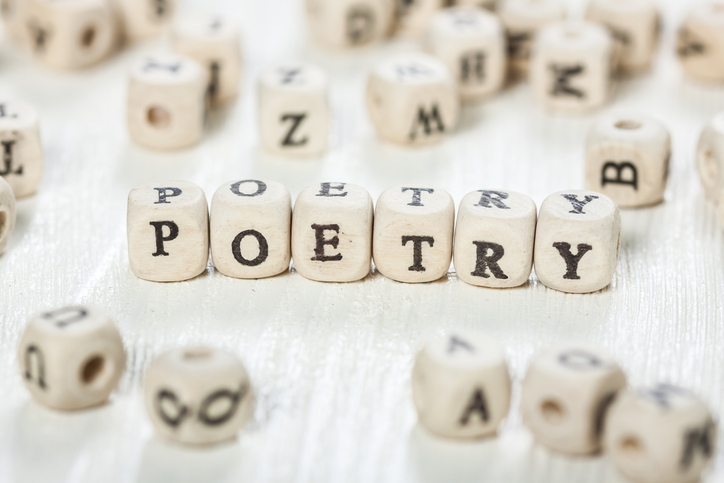
A simple but effective resource to get year 7 students started is Shopping list poems. I like the way it uses everyday items in order to create something new. There’s a lot of support for less confident writers here, which should enable everyone to produce something satisfying. I’m not always a fan of searching for ‘wow’ words to ‘improve’ a piece of writing but here it works – and it shows how you can put the adjectives after the noun to be more effective. You will probably want to add more adjectives to the word bank, perhaps some less obvious ones, like ‘friendly’ or ‘cool’.
A recipe is a kind of list poem, only more active. Try Recipe poems for group or class poems with younger students. Ask each group to select one or two good lines from everyone and then combine them.
Writing poems is a key way into establishing a familiarity with poetry. Rather than spotting imagery, create it. Work some alliteration into your writing and learn how much is too much. Familiarity leads to a lack of fear or dislike, a reaction which is all too common at the higher key stages, but absent at KS1 and 2. Francis Gilbert’s article, From the Creative to the Critical – approaches to Unseen Poetry, takes this approach.
He argues that ‘Developing your skills at writing poetry will help you to write critically about poetry. Once you have written some poems, you will find it much easier to respond to unseen poetry in a critical and original way.’ I couldn’t agree more. Perfect for KS3-5.
Having just helped a local school with its entry for Poetry by Heart, I was attracted by Preparing to perform poetry. This is a very useful practical guide to help students move on from simply saying (or reciting) a poem, to performing it. Not all students want to perform but there are ways round this. One is to involve them in a group performance. The discussion that can accompany this activity is as useful (or more useful) than the end product. Another approach is to record a performance. Many young people are less fazed by a microphone or a camera than by facing the class.
Not only are examiners keen on students comparing poems, but so am I. Comparisons can bring out things that you might otherwise miss. Here are three resources to guide students through this kind of approach, particularly useful if they haven’t done this before. I might precede any of these with a comparison of two poems they will already have come across, such as a poem by Spike Milligan and one by Edward Lear.
Comparing ‘Home Thoughts Abroad’ and Hurricane Hits England, Poetry comparison and Comparing poems in the Love and relationships cluster both include approaches you will find useful, even if these particular poems are not ones you are studying.
One approach I might use with lower attaining students would be to provide some answers to complete the grid in the Browning/Nichols comparison, cut them up and ask students in small groups to put them where they think they should be placed on the grid. Whatever you do, try to employ resources that allow students some creative freedom. Perhaps they can suggest other headings for a grid or different ways to compare certain poems. Let them know you are open to suggestions!
This year, to celebrate National Poetry Day on 6th October, I've shared three teaching ideas on the theme of the 'environment' as the starting point for students' own poetry writing experiments. With sentence starters and prompts, students explore the idea of contrasts as a starting point for their own poem.
This article was first published as an Editor's pick newsletter.
